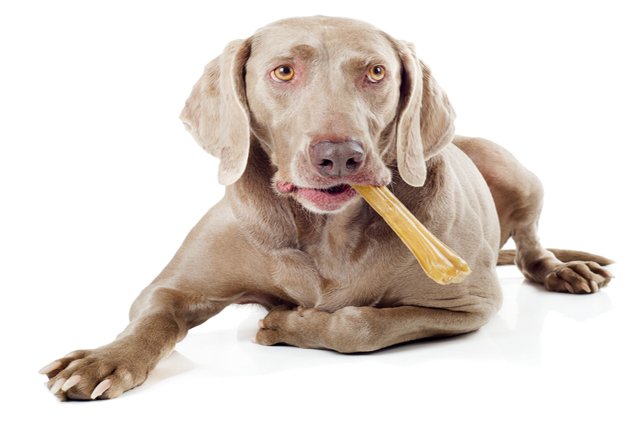Labmaraner


About Labmaraner
Also known as the Labraraner or Weimador, the Labmaraner is a great looking canine who is known for his loving and loyal personality. If you are in search of a furry friend who will always long to be at your side and who will be thrilled to participate in a variety of activities with you, this could be the right choice for you and your family.
Check out the facts below to get to know the Labmaraner a bit better. The more you understand this breed, the better prepared you will be to make the right choice when it comes to bringing a new canine companion home.
The Labmaraner is a cross between a purebred Labrador Retriever and Weimaraner.
The Labmaraner is a designer dog breed from the United States.
The Labmaraner is a cross between a purebred Labrador Retriever and Weimaraner.
Always feed your pet a high quality food that is packed with the nutrients his body needs to thrive. When it comes to feeding your Labmaraner, you can give your dog anywhere from 4-5 cups of dry food every day, but split this amount up into multiple servings so that your dog is eating a minimum of two meals per day.
If you are also going to give your precious pooch a high quality canned food for dogs, just reduce the amount of dry food that you are providing so that you don’t end up overfeeding your pet and causing unwanted weight gain.
Of course, if you have any questions at all regarding what your dog should be eating, or how much, it is best to consult your veterinarian.
The Labmaraner is a great looking canine who is known for his loving and loyal personality.
Because the Labmaraner is breed that is eager to please and intelligent, training should be easy, and your dog should be able to learn the ropes with fewer repetitions than other breeds when he is tackling new commands.
Using treats to motivate and reward your Labmaraner will be a smart move because these dogs love to eat. Also incorporate the use of positive techniques, such as plenty of praise, and keep the training sessions short and sweet. Be consistent, firm, and engaging. Even when your dog shows a bit of a stubborn attitude, don’t become harsh.
Consistent training will keep behavioral problems at bay, and when good training is combined with socialization at an early age, your dog will understand that you are the pack leader. Just be prepared, as this breed might decide to test your dominance, so remain firm.
A large-sized breed, the Labmaraner weighs between 60 and 100 pounds.
The Labmaraner is a breed known for its loving, gentle, and devoted temperament. These friendly canines will thrive on attention and being near the family all the time. And if you have other pets or kids, these dogs will get along with them just fine as well.
Considered pack-oriented and social, these dogs should not be left alone for many hours at a time, as separation anxiety could develop. If you are the type of person who works long hours or travels a lot, the Labmaraner might not be the best choice for your lifestyle.
As is the case with all hybrid canine breeds, the Labmaraner might be prone to inheriting the health conditions that most commonly affect its parent breeds. However, there is no way to predict an individual dog’s long-term health, and there is no guarantee that your dog will inherit any of those problems.
The best that you can do is purchase your puppy from a reputable breeder who can prove the health of the parents. Then work closely with your vet, and keep an eye out for the symptoms associated with the following conditions: ear infections, heart problems, cold tail, joint dysplasia, eye conditions, bloat, epilepsy, factor XI deficiency, osteochondritis dissecans, and immune-mediated disease.
The Labmaraner has an average lifespan of 10 to 12 years.
Labmaraners are lively dogs who require a lot of exercise every day so they can burn off their energy in a positive way. These dogs do best when they are with people who are active, as they need the physical activity to remain healthy and happy.
If you have an enclosed and safe backyard, your dog will enjoy running around off-leash, playing with toys, and playing interactive games with your family. You can also take your pet to the dog park, where he can interact with other canines. And you can even take your Labmaraner for a run, swim, or on a hike, as a few examples, in addition to daily walks, for added variety.
You should also have a variety of toys inside your house so that your dog can remain mentally stimulated even when he isn’t outside.
The Labmaraner is a breed known for its loving, gentle, and devoted temperament.
The Labmaraner is not recognized by the American Kennel Club, as it is considered to be a hybrid breed. However, this breed is recognized by the American Canine Hybrid Club (ACHC), the Designer Breed Registry (DBR), the Designer Dogs Kennel Club (DDKC), the Dog Registry of America, Inc. (DRA), and the International Designer Canine Registry (IDCR).
A Labmaraner will typically have a glossy, flat, and short coat that sheds a low amount. Therefore, grooming will be pretty simple and straightforward. You can brush your pet two or three times a week, and give him a bath when he gets too dirty. However, some Labmaraners will have a longer coat that will require more brushing to keep it looking healthy and smooth.
Even though your Labmaraner will grow up to be a big dog, your puppy will be small and delicate. Supervise any time that your puppy spends around small children, and make sure that your pet is properly trained and socialized from a young age. Doing so will ensure that he will become friendly and confident around a variety of people and animals.
Photo credit: Kate Herd (Kruger)/Flickr; bit245/Depositphoto.com; FrankFaster/Bigstock

Lisa Selvaggio is a freelance writer and editor, and our resident cats-pert, with certifications in pet nutrition and pet first aid. She enjoys producing content that helps people understand animals better so they can give their pets a safe and happy home.
More by Lisa Selvaggio

























